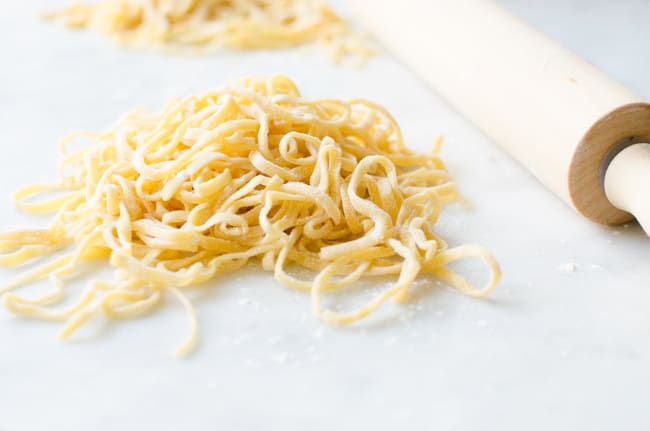
Making pasta is probably one of the most iconic scenes of the Italian culinary tradition. Several decades ago, Italian women used to regularly make pasta from scratch, as did my great aunt and grandmother. All they needed were eggs, flour, a rolling pin…and strong arms.
Times have changed since then and life has become much busier. These days, even the average Italian family finds it easier to grab a package of tagliatelle from the pasta aisle. There’s nothing wrong with pre-packaged pasta. I, myself, buy it in bulk when I’m able to find my favorite brand. Store bought is fast and convenient, but it’s not as good as the one you can make at home, from scratch. Like for many other foods, the fresh stuff is always better.
Luckily, in some Italian households this art is still preserved, practiced, and handed down from one generation to another. Growing up, I watched my great aunt and my mother making tagliatelle noodles every once in a while. There was usually a really nice sauce to go with it, one that called for fresh pasta–like ragù or duck sauce. We typically used an electric machine and making pasta was a fun activity: I was in charge of covering the freshly rolled noodles with dishtowels to prevent them from drying out. As I helped, my mother never failed to point out: “See? It’s so easy to make! You only have to remember to use one egg for every hundred grams of flour”. That was pretty much the dose for one generous serving–it was a fairly easy recipe, and that ratio stuck with me immediately.
Following my mother’s suggestion, I replaced half flour with semolina flour in order to get a more rustic and hearty texture. Semolina flour is sold in most grocery stores. If you can’t find it, it’s okay–just use all purpose flour and stick to the 100g/1 egg rule and you’ll be fine. The recipe is super simple and the technique can be learned quickly. Once you get the basics, you’ll be able to make it with more confidence and, sooner than you can imagine, you’ll start stashing it in your freezer (granted it’s always better to eat it fresh!).
Needless to say, I’ll soon share a recipe for a nice sauce to go with your homemade pasta. In the meantime, have fun getting covered in flour and working out those forearms!
HAND-ROLLED FRESH EGG PASTA – PASTA ALL’UOVO TIRATA A MANO
Servings: 2 | Prep/rest time: approx 1 hr 15 min| Cook time: 2-5 min (varies based on thickness)
INGREDIENTS
100 g (3.5 oz) all purpose flour (or even better, finely milled Italian flour – “Farina Tipo 00”)
100 g (3.5 oz) semolina flour
2 large eggs
1 pinch coarse salt (optional)
COMBINING
1. Sift together semolina flour and all purpose flour on a clean working surface and form a well in the center.
2. Crack eggs into the center and add a pinch of salt. Start mixing eggs with a fork, gradually drawing the flour from the borders towards the center.
KNEADING
3. Bring all the dough lumps together with your hands and start kneading for about 10 minutes, until you obtain a smooth dough ball.
– Some factors like humidity and the size of the eggs can impact the moisture level of the dough and you’ll probably need to adjust the quantity of flour: don’t incorporate all the flour, if the dough won’t take it; on the other hand, if the dough is too sticky, gradually add small quantities of flour until you achieve the ideal texture.
-Kneading is the hardest part and the dough may seem hard to work at first. Don’t be alarmed; the dough will soften up once it has rested. You can also bang it on the work surface to help make it more elastic.
RESTING
4. Wrap the dough tightly in plastic wrap and let it rest at room temperature for at least 30 minutes.
ROLLING
5. Once the dough has rested, divide it into 2 or 3 pieces. Take one piece and wrap the other ones in plastic wrap to prevent them from drying out.
6. Flatten the dough piece with your hands into a circular or rectangular shape.
7. Lightly dust the dough with flour and roll it out with the rolling pin, applying pressure from the center forward, and releasing the pressure as you return back to the center. Repeat a couple of times. Turn dough disk 90 degrees (to ensure even thickness and shape) and lightly dust it with flour again (to prevent from sticking to surface or rolling pin). Repeat all these steps, until you obtain a very thin and elastic dough. If you are making lasagne, tagliatelle or tagliolini, roll dough to slightly less than .5 mm, which is a bit thinner than a credit card. If you are making ravioli, roll it even thinner.
CUTTING
8. Take rolled dough disk and dust it generously with flour. Take one side and fold a strip about 1 1/2 inches, then fold it again over itself until you run out of dough (see photos). Slice the folded dough into strips as wide as you prefer. You can cut your pasta into a variety of widths, for the following shapes:
Tagliolini –> less than 1/8″ wide
Tagliatelle –>1/4″ wide
Pappardelle–> between 5/8″ and 3/4″ wide
9. Generously dust noodles with flour (or semolina flour) and place them on a tray lined with parchment paper and dusted with flour, until ready to be cooked.
Repeat the same steps for the remaining pieces of dough.
FEW MORE NOTES…
– Pasta dough gets dry pretty fast and once you roll it, you should cut it right away. If you don’t, cover it with a clean dishtowel.
– I recommend cooking fresh pasta right away but you can also freeze it. First, let it harden on a tray lined with parchment paper; then, store it in a freezer bag.
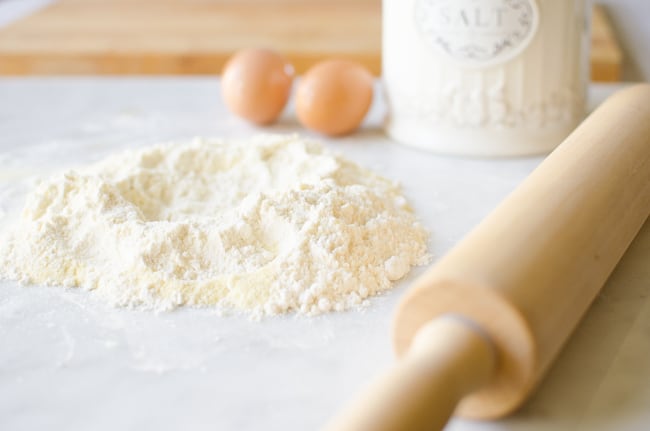
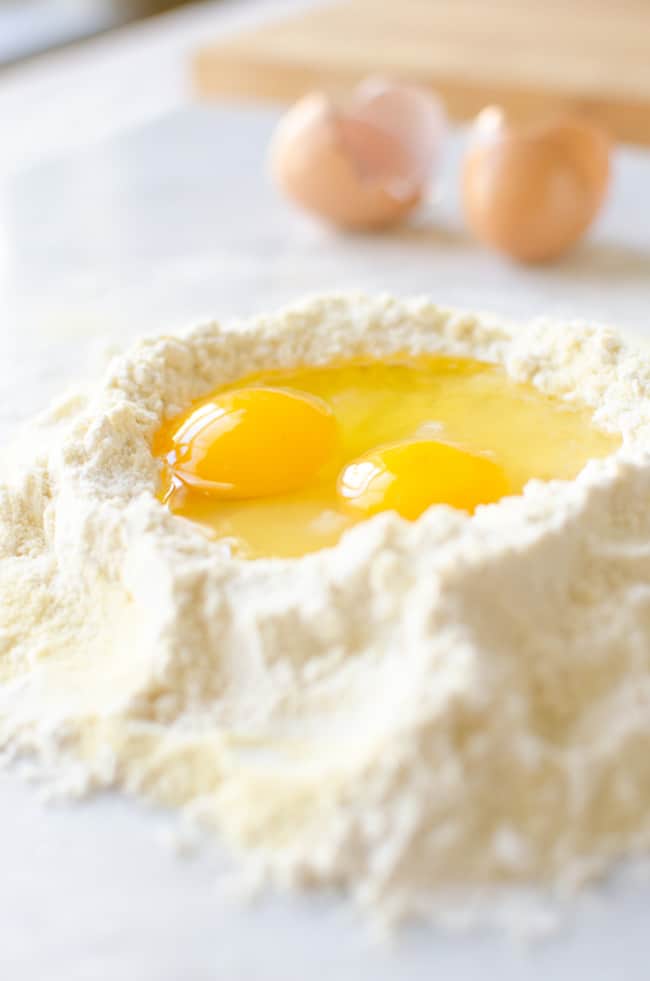
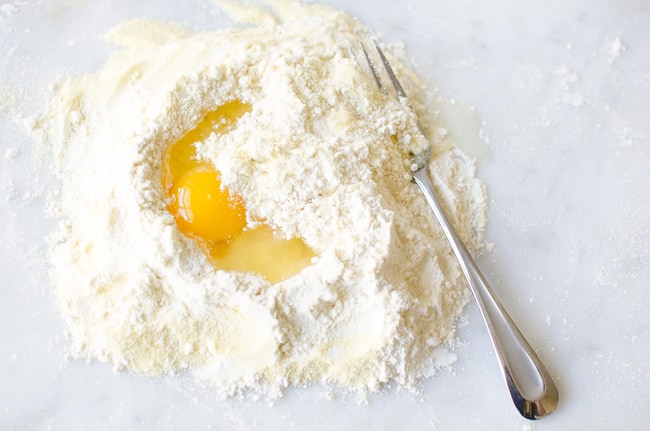
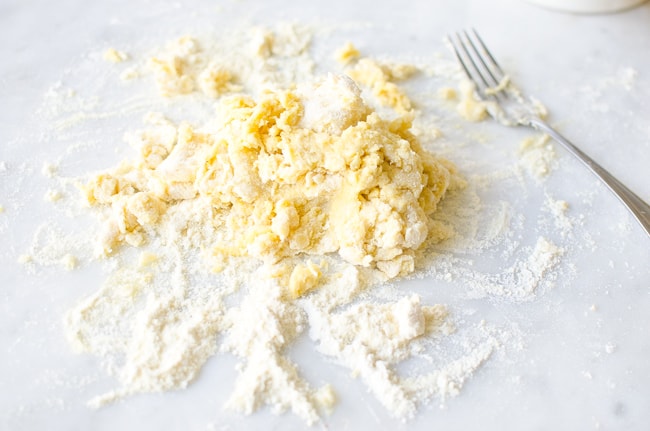
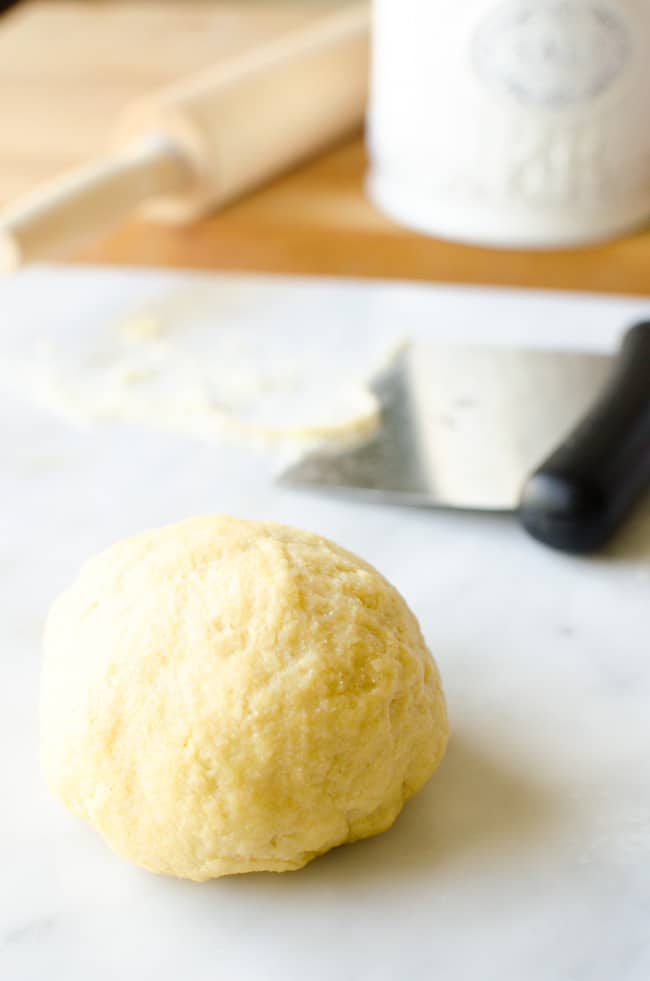
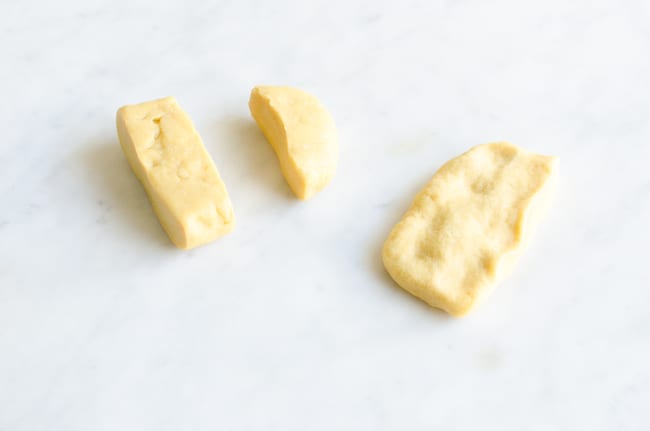
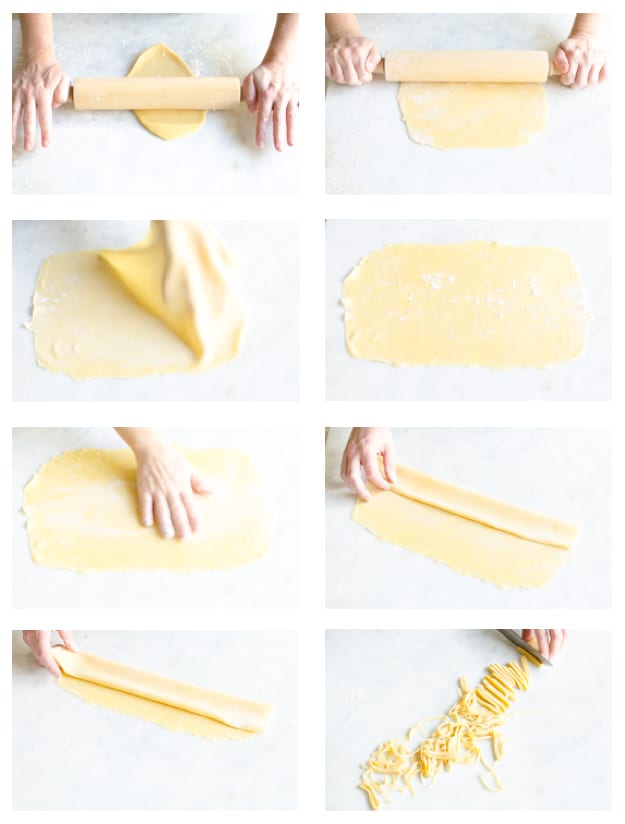
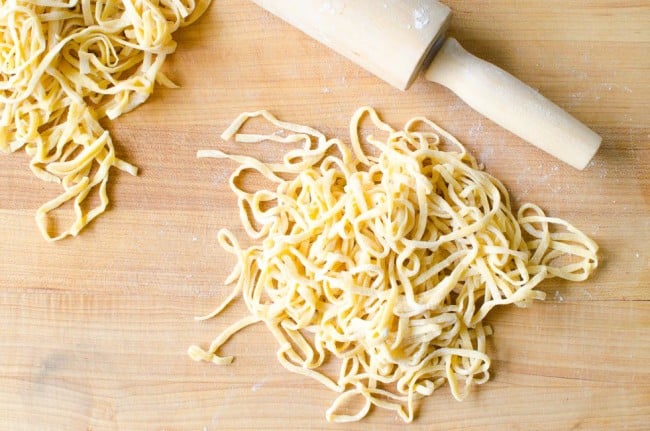

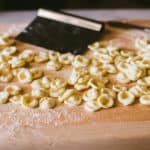



Leave a Reply